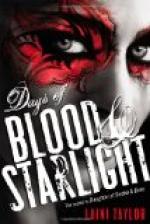In a savage rudimentary way he went over the ethical aspect of the affair, coming to no very clear conclusion. He would have destroyed the thing himself if she had asked him, but she should have asked him. And even in his engrossing indignation he could experience a kind of spiritual blush as he recognized how safe his concession was behind the improbability of its condition. Finally he wrote a line to Janet, informing her that the portrait had sustained an injury, and postponing her and her father’s visit to the studio. He would come, in the morning to tell her about it, he added, and despatched the missive by the boy downstairs, post-haste, in a cab. It would be to-morrow, he reflected, before he could screw himself up to talking about it, even to Janet. For that day he must be alone with his discomfiture.
* * * * *
In the days of his youth and adversity, long before he and the public were upon speaking terms, Mr. George Jasper had found encouragement of a substantial sort with Messrs. Pittman, Pitt & Sanderson, of Ludgate Hill, which was a well-known explanation of the fact that this brilliant author clung, in the main, to a rather old-fashioned firm of publishers when the dimensions of his reputation gave him a proportionate choice. It explained also the circumstance that Mr. Jasper’s notable critical acumen was very often at the service of his friend Mr. Pitt—Mr. Pittman was dead, as at least one member of a London publishing firm is apt to be—in cases where manuscripts of any curiously distinctive character, from unknown authors, puzzled his perception of the truly expedient thing to do. Mr. Arthur Rattray, of the Illustrated Age, had personal access to Mr. Pitt, and had succeeded in confusing him very much indeed as to the probable success of a book by an impressionistic young lady friend of his, which he called “An Adventure in Stage-Land,” and which Mr. Rattray declared to have every element of unconventional interest. Mr. Pitt distrusted unconventional interest, distrusted impressionistic literature, and especially distrusted books by young lady friends. Rattray, nevertheless showed a suspicious indifference to its being accepted, and an irritating readiness to take it somewhere else, and Mr. Pitt knew Rattray for a sagacious man. And so it happened that, returning late from a dinner where he had taken refuge from being bored entirely-to extinction in two or three extremely indigestible, dishes, Mr. George Jasper found Elfrida’s manuscript in a neat, thick, oblong paper parcel, waiting for




